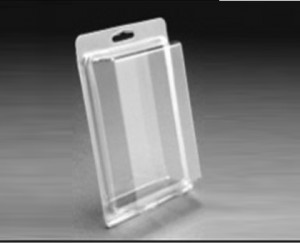Blister pack is a term for several types of pre-formed plastic packaging used for small consumer goods, foods, and for pharmaceuticals.
The primary component of a blister packing is a cavity or pocket made from a formable web, usually a thermoformed plastic. This usually has a backing of paperboard or a lidding seal of aluminum foil or plastic. A blister that folds onto itself is often called a clamshell.
Blister packs are useful for protecting products against external factors, such as humidity and contamination for extended periods of time. Opaque blisters also protect light-sensitive products against UV rays.
Use
Blister packs are used to package products such as toys, hardware, medication, etc.
Many blister packaging machines use heat and pressure via a die to form the cavity or pocket from a roll or sheet of plastic. In recent years, improvements in cold forming, specifically allowing steeper depth/angles during forming, which minimizes the amount of material used for each cavity—have helped this technology increase. The main advantages of the plastic-based blister pack are its more compact size compared to cold formed aluminum and its transparency to see the product.
Hangzhou Xunda Packaging
From Wikipedia, the free encyclopedia
